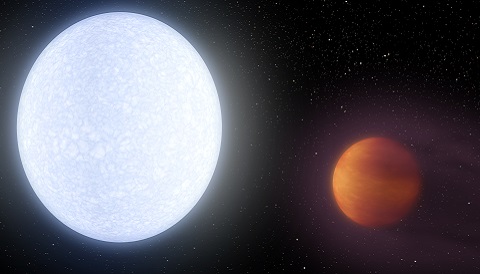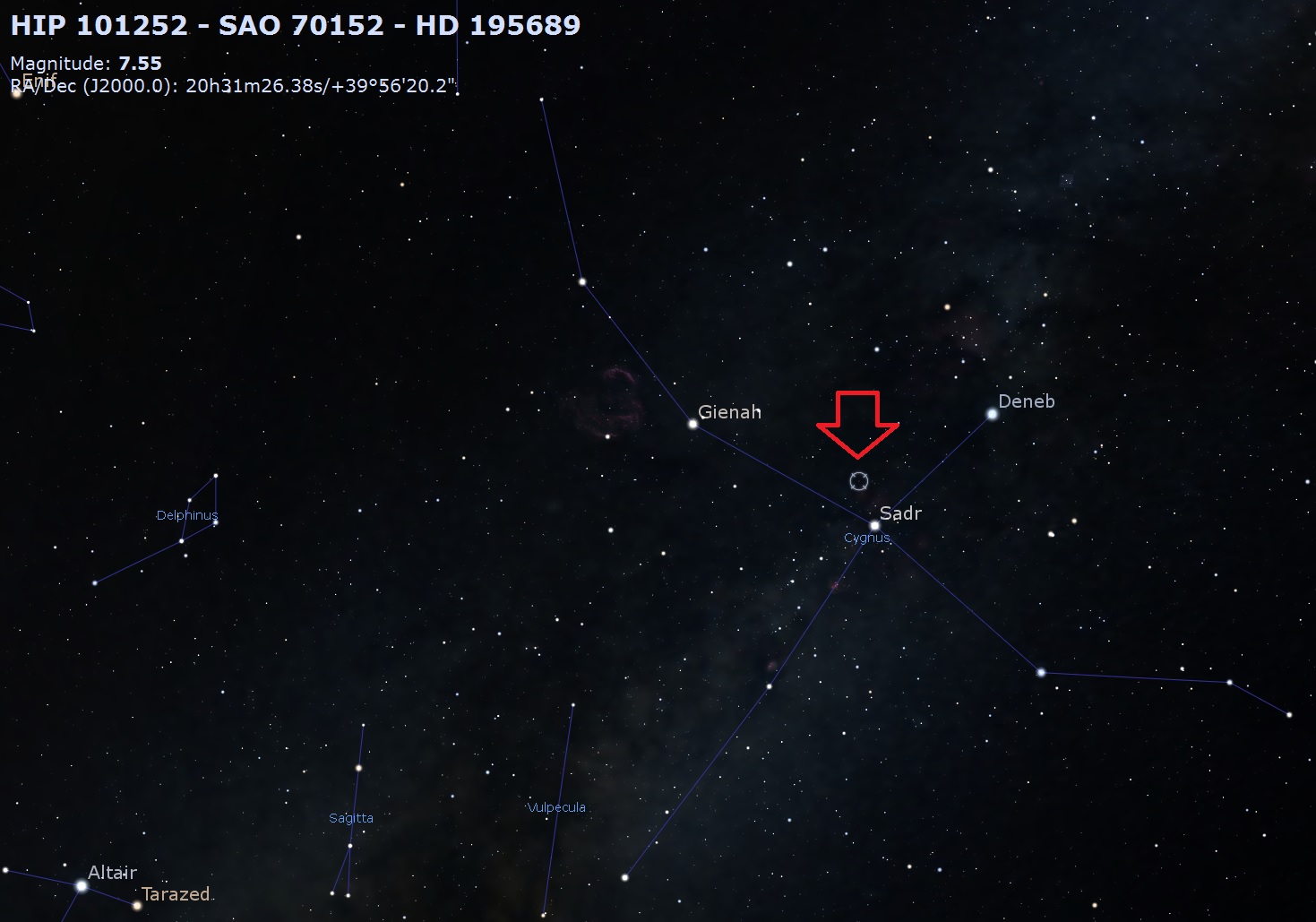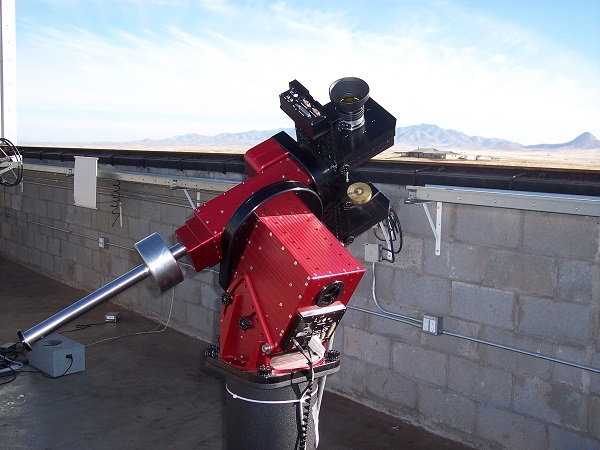Astronomers announce the discovery of bloated gas giant KELT-9b, the hottest "hot Jupiter" exoplanet known, which sizzles as it wheels around its massive primary star.

Robert Hurt / JPL / Caltech
Hot Jupiters aren't known for their hospitality, what with the heat, the poisonous air, and the possibility of flesh-melting "metal rain." But the hottest and least hospitable of all is KELT-9b.
News of this strange world comes out of the 230th American Astronomical Society meeting underway this week in Austin, Texas. Scott Gaudi (Ohio State University) and colleagues also outlined the discovery in a recent issue of the journal Nature.
With almost triple Jupiter's mass, KELT-9b orbits a massive A-type star more than twice the mass of our Sun every 18 hours. A planet this close in is probably tidally locked, keeping one hemisphere perpetually turned toward its host star.
The constant bombardment of ultraviolet energy toasts KELT-9b like a marshmallow, bringing its daytime temperature to around 4600K (over 7,800°F). That's actually hotter than the surface of many stars, and only 1178K cooler than our Sun's visible surface.

NASA / JPL / Caltech
“It's a planet by any typical definitions based on mass,” says Gaudi in a recent press release, “but its atmosphere is almost certainly unlike any other planet we've ever seen just because of the temperature on its day side.”
Molecules such a water, methane, and carbon dioxide can't form at such high temperatures on the dayside, though it's possible that some simple molecules might form on the nightside. Moreover, the overheating of KELT-9b's dayside has puffed it up — though KELT-9b is almost triple Jupiter's mass, it's only half as dense. KELT-9b is the hottest gas giant discovered and only the 6th found orbiting a massive A-type star. It's not the hottest exoplanet, though. That honor goes to the rocky world Kelper-70b which reaches a blazing 7000K, or more than 12,000°F.
Orbiting just 0.035 astronomical units (a.u.) from its host star (3.3 million miles, only about a tenth the average distance of Mercury from our Sun), KELT-9b also misses the title of closest exoplanet to its host, currently held by PSR J1719-1438b, locked in a 2-hour, 0.004 a.u. orbit around a millisecond pulsar.
And KELT-9b just gets stranger. The planet is also in a highly inclined polar orbit with respect to the star. Astronomers measured the rotation and orientation of the star using a technique known as Doppler tomography, looking for spectral lines that shift to the blue side of the spectrum as one limb of the rotating star approaches us and to the red as the other limb recedes. KELT-9b and its host star (which also goes by the moniker HD 195689) are located in the sky at right ascension 20h 32m 36s, declination +39° 56' 20" in the constellation Cygnus.

Stellarium
Future prospects for KELT-9b aren't good. “KELT-9(a) radiates so much ultraviolet radiation that it may completely evaporate the planet,” says Keivan Stassun (Vanderbilt University). KELT-9b very probably trails a long comet-like streamer of gas and dust, created as the star's ultraviolet radiation strips the planet of its atmosphere.
And the long-term prospects are even grimmer: The planet's host a massive star just 300 million years old, is set to become an angry red giant in a couple hundred million years — dooming KELT-9b.
Small Scopes, Big Finds
KELT-9b was discovered by the KELT (Kilodegree Extremely Little Telescope) using the transit method, where subtle dips in a host star's brightness can signify a planet passing in front of it from our point of view. Vanderbilt University, Lehigh University, and Ohio State jointly operate the KELT project, which uses telescopes based in the northern hemisphere (KELT-North) at Winer Observatory near Sonoita, Arizona, and in the southern hemisphere (KELT-South) at the Sutherland astronomical observation station in South Africa.

Joshua Pepper / PBWorks / KELT-North
KELT is also unique in that it uses low-cost, off-the-shelf technology and scans a wide field of view, simultaneously monitoring tens of thousands of 8th- to 11th-magnitude stars for tiny changes in brightness. Unlike many multi-million dollar projects, the price tag for KELT was less than $75,000.
Located 615 light-years away, KELT's newest find will provide a great target for the Hubble Space Telescope and future missions such as the James Webb Space Telescope and the Transiting Exoplanet Survey (TESS), both set to launch in 2018.
KELT-9b joins the ranks of 3,490 known exoplanets and counting that have been discovered over the last two and a half decades. It's amazing to think back to the era of astronomy before the 1990s, when astronomers knew of no planets beyond our solar system. Now, even with Kepler's main exoplanet-finding mission over, such discoveries are still weekly affairs, and we're beginning to explore the extremes to see how bizarre such worlds can really be.
 0
0









Comments
You must be logged in to post a comment.